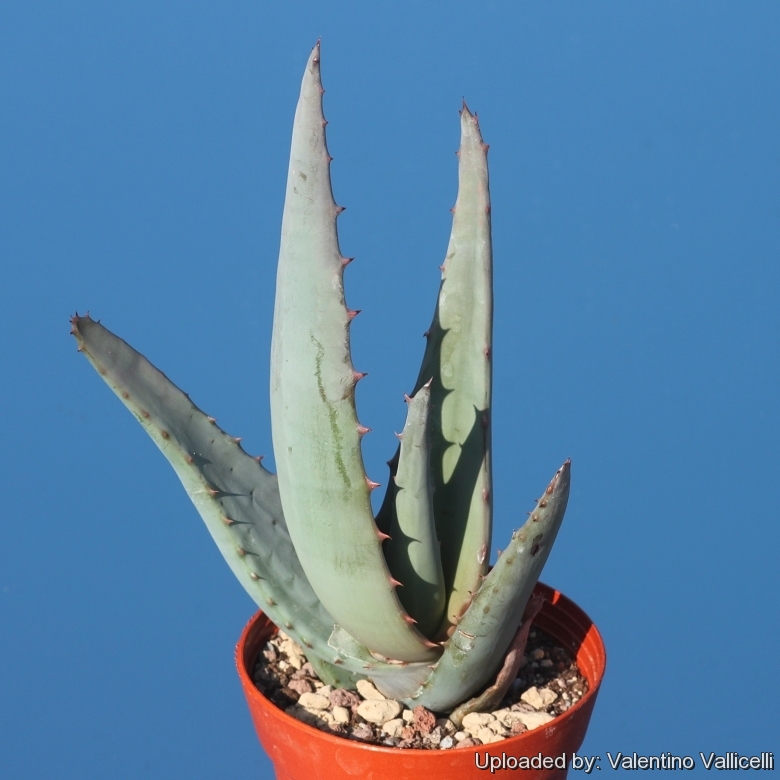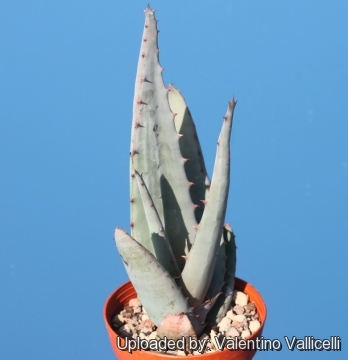




Your support is critical to our success.

Origin and Habitat: The specific epithet means from Pretoria in South Africa but this plant has a wider range from Central to north-eastern Transvaal (Widespread and common in Mpumalanga and Limpopo provinces and much more rare in Gauteng) Outside of South Africa it occurs along the Lebombo Mountains in Swaziland and also in north-eastern Zimbabwe (ex Rhodesia) in the Makoni and Mutare districts. The subpopulations in Zimbabwe are isolated from those in South Africa and Swaziland where plants are slightly larger with slightly longer flowers and pedicels.
Altitude range: 1225–1825 metres above sea level.
Habitat: Aloe pretoriensisSN|25082]]SN|25082]] grows in stony grassland, open woodland, Savannah and high rainfall Brachystegia woodland, often on northern and eastern exposed rocky slopes and ridges of mountains and hills. The area is mild in summer and cold in winter, with summer rain.
Synonyms:
- Aloe pretoriensis Pole-Evans
ENGLISH: Pretoria Aloe, Mist Belt Tree Aloe
Description: Aloe pretoriensisSN|25082]]SN|25082]] is a solitary rosette forming perennial succulent that rises slowly on a trunk to as tall as 1 metre topped with 50-90 cm wide head of light bluish-green leaves. Occasionally it may forms small groups, rarely suckering.
Rosette: Tends to be distichous as a seedling, but forms a perfect rosette as it grows. The rosette is compact with approximatively 40-60, suberect to spreading leaves.
Stem: Aloe pretoriensisSN|25082]]SN|25082]] develops a simple, erect, stem of up to 75(100) cm tall and 25 cm in diameter with extreme age. The stem below the rosette is covered with persistent withered leaves.
Leaves: Slender, lanceolate-attenuate, often with a withered apex, thinly fleshy, 300-500 cm tall, 4-15 cm broad at the base, pale green or glaucous green without spots and obscurely lineate. The leaf tips often turn reddish brown in autumn to match the flowers. Margin cartilaginous with sharp, orange to black deltoid teeth 2–4 mm long and 8–13 mm apart.
Inflorescence: Single, robust, with 5-8 spreading branches, some of these re-branched, and measures from 90 to 210(-350?) cm in height above the leaves with conical racemes of bright red flowers which are nectar rich and are a good food source for sunbirds. Each branch is subtended by an ovate scarious bract up to about 2 cm long and 1,5 cm broad, with several sterile spathulate bracts below each raceme.
Racemes: 20–30 long, up to 10 cm in diameter, cylindrical-acuminate, densely flowered, the buds covered by the bracts; bracts 12-16 mm long, 6-10 mm broad, scarious and many-nerved.
Flowers: Pale to bright pinkish-red 35-45 mm long; Perianth 28–35 mm long, 7–8 mm in diameter across the ovary, cylindric-trigonous,all segments free, tips slightly spreading; Peduncles 4–8(11)-branched, pedicels 12-40 mm long. Anthers not or hardly protruding beyond the margin. Ovary 6-10 cm tall, 2-3 mm wide, deep green; style protruding beyond the margin 1-5 mm.
Blooming season: Late fall into winter.
Bibliography: 1) Dr J.P. Roux “Flora of South Africa” (2003)
2) Barbara Jeppe “South African aloes” Purnell, 1974
3) Raimondo, D., von Staden, L., Foden, W., Victor, J.E., Helme, N.A., Turner, R.C., Kamundi, D.A. and Manyama, P.A. 2009. “Red List of South African Plants.” Strelitzia 25. South African National Biodiversity Institute, Pretoria.
4) Hans Bornman, David S. Hardy “Aloes of the South African veld” Voortrekkerpers, 1971
5) Pole Evans “Aloe pretoriensis” in: The Gardeners' Chronicle 3, 56: 106 (1914)
6) S. Kativu “Aloe pretoriensis” Flora Zambesiaca, Vol 12 Part 3, page 48 (2001)
7) Reynolds, “Aloe pretoriensis” Aloes S. Africa: page 306 (1950)
8) B-E. van Wyk & G.F. Smith, “Guide to the Aloes of South Africa” 62 (1996).
9) Glen & Hardy “Aloe pretoriensis” Fl. South. Africa 5, 1 (1): 76 (2000).
10) West “Aloes Rhodesia” 71, pl. 19c & d (1974)
11) Oliver West “A field guide to the aloes of Rhodesia” Longman Rhodesia, 12/giu/1974
12) Aloes Zimbabwe, rev. Kimberley: 79 (1992)
13) Court, Succ. Fl. South. Africa: 124 (1981).

Aloe pretoriensis Photo by: Valentino Vallicelli
The gallery now contains thousands of pictures, however it is possible to do even more. We are, of course, seeking photos of species not yet shown in the gallery but not only that, we are also looking for better pictures than those already present. Read More...
Cultivation and Propagation: Aloe branddraaiensis is one of the more attractive stout stemmed aloes easy to grow and adaptable, it seldom suckers, but occasionally can form groups. It can be grown in large containers. It enjoys full sun and a frost free environment with occasional summer irrigation.
Soil: Always use a good quality, loamy sandy soil with plenty of drainage with chips at the bottom of containers.
Repotting: Use pot with good drainage.
Watering: Needs moderate to copious waterings in summer, but do not overwater, or not at all in the colder months of winter. Outdoors it can withstand long periods of drought, but they will thrive and flower more profusely if watered in the correct season. This aloe is very tolerant of drought, although the tips of the leaves may wither and curl during hot, dry periods. Supplemental watering will help keeping the leaves plump and juicy.
Fertilization: Feed it once or twice during the growing season with a fertilizer specifically formulated for cactus and succulents (poor in nitrogen), including all micro nutrients and trace elements diluted to ½ the strength recommended on the label.
Exposure: It need full sun to partial shade, but plants grown in partial shade usually look healthier and more succulent. It is however very hardy when grown in full sun with the minimum water.
Hardiness: When dry it can stand light frost but it is damaged in hard freezes, but recovers quickly. The leaf tips get damaged below -2°C. During the winter months, the plants should be grown cool to initiate flower development (about 5-10°C )
Pests & diseases: Incorrect watering, poor drainage or too much shade can lead to attack by pests and diseases.
Maintenance: Removal of old flower stalks; Divide the crowded clumps periodically. It grows much better outdoors in spring and summer.
Gardening: In mild climates it can be cultivated outdoors for use in landscaping, it can be grown in large, rocky, well-drained soil in gardens in drier areas. It adapts well to a variety of soils and climates, but will grow best in regions with a climate close to that of its native deserts not too cold, and not too wet. They grow slowly, but not agonizingly so being able to increase their width by 10- 20 cm per year under favourable conditions.
Propagation: By division of offshoots that develop around the outside of the main rosette in spring, the cuttings must be dried out for at least 1 week before planting in river sand. It is easily rooted in potting soil with warmth. It can also be propagated or by seed planted in autumn, in trays of coarse river sand, compost and soil. Sprinkle the seeds evenly on the surface and cover with a layer of small pebbles. The pebbles help the seedlings to stay upright and prevent damping off. Fresh seeds germinate quickly at 18° C. Keep seed tray in a dry corner and do not allow to dry out, but may damp off if overwatered. Transplant the seedlings after one year.
| Your Actions | |
|---|---|
| Back to Aloe index | |
| Back to Aloaceae index | |
 |
Back to Succulents Encyclopedia index |
Privacy stantement - Terms and conditions - How to cite - About us - Feedback - Donate



